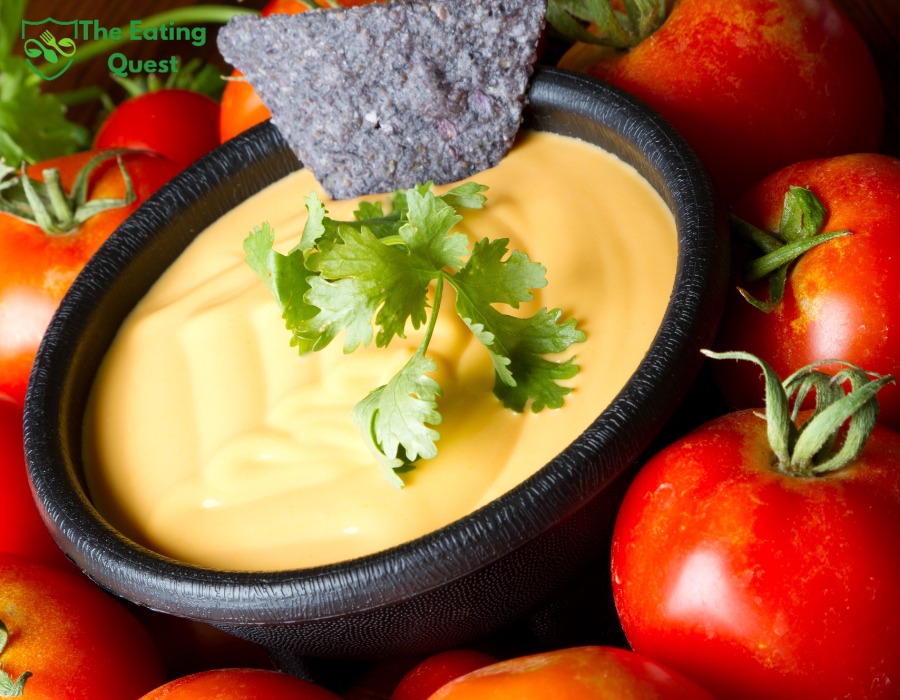If you’re a queso fan, you might wonder How Long Does Queso Last in the Fridge? Whether you’ve made your queso or purchased it from a store, it’s important to know how long it stays fresh to avoid any foodborne illnesses. In this article, we’ll answer your questions about how long queso lasts in the fridge and share some tips on how to store it properly.
When it comes to queso, the length of time it lasts in the fridge can vary depending on the type of queso and how it’s stored. Some types of queso can last up to 1 month in the fridge, while others may only last a few days. Additionally, factors such as air exposure, temperature, and mold can all affect the texture and taste of your queso. In the following paragraphs, we’ll break down the different types of queso and how to store them to ensure they stay fresh for as long as possible.
How Long Does Queso Last in the Fridge?
If you love queso, you might wonder How Long Does Queso Last in the Fridge?. The answer depends on the type of queso you have and how you store it. Here’s a breakdown of how long different types of queso can last in the fridge:
Store-Bought Queso
Store-bought queso, like Tostitos, usually has preservatives to help it last longer. Once opened, it should last in the fridge for up to 2 months. However, it’s freshest if consumed within 2 weeks after opening. Always check the label for specific storage instructions and best-by dates.
Homemade Queso
A homemade queso can last up to 4 days in the fridge if stored in an airtight container. Consuming it within this time frame is best to ensure freshness and quality. If you have leftover queso, store it in a clean container with a tight seal to prevent it from drying out or absorbing odors from other foods in the fridge.
Queso Fresco
Queso fresco is a type of fresh cheese with a short shelf life. Once opened, it can last in the fridge for about a week. If you have an unopened block of queso fresco, it can last in the fridge for up to 6 months. However, consuming it within a few days of opening is best to ensure freshness and quality.
In summary, the shelf life of queso in the fridge varies depending on your type of queso and how you store it. Always check the label for specific storage instructions and best-by dates, and consume queso within the recommended time frame to ensure freshness and quality.
What is Shelf Life of Queso?
Regarding queso, its shelf life depends on how it is stored and whether it is homemade or store-bought. Here are some general guidelines to help you determine how long your queso will last:
Homemade Queso
If you have made queso at home, it can last up to 4 days in the refrigerator if stored in an airtight container. However, it is important to check for any signs of spoilage, such as a bad odor or mold. Always check the expiration date of the ingredients you used to make the queso.
Store-Bought Queso
Store-bought queso, like Tostitos, typically has a longer shelf life than homemade queso. Once opened, it can last up to 2 weeks in the refrigerator if stored in a covered container. Again, it is important to check for any signs of spoilage before consuming the queso.
Expiration Date
Always check the expiration date of the queso before buying or consuming it. This will show you how long the queso will last and whether it is still safe to eat.
Freshness
To ensure the freshness of your queso, store it in an airtight container in the refrigerator. This will help prevent any bacteria from growing and will keep the queso fresher for longer.
Spoilage
If you notice any signs of spoilage, such as a bad odor or mold, it is best to discard the queso. Consuming spoiled queso can lead to food poisoning and other health issues.
In summary, the shelf life of queso depends on how it is stored and whether it is homemade or store-bought. Always check the expiration date and look for any signs of spoilage before consuming queso. Store it in an airtight container in the refrigerator to keep it fresh for longer.

How do you Store Queso fresco?
When it comes to storing queso, you should keep a few things in mind to ensure that it stays fresh for as long as possible. Here are some tips on how to properly store queso:
Refrigerating Queso
To refrigerate queso, transfer it to an airtight container or wrap it tightly with plastic wrap. This will help prevent air from getting in, causing the queso to spoil quickly. Store-bought queso should be consumed within 2 weeks of opening, while homemade queso will last up to four days in the refrigerator. Check the expiration date and consume the queso before it goes bad.
Freezing Queso
If you want to store the queso longer, you can freeze it. To freeze queso, transfer it to a freezer bag or container and remove as much air as possible before sealing it. Store-bought queso can be frozen for up to six months, while homemade queso can be frozen for up to three months. When ready to use the queso, thaw it in the refrigerator overnight and reheat it on the stove or microwave.
When freezing queso, it’s important to note that the texture may change slightly once it’s thawed. However, the flavor should still be the same. To prevent freezer burn, make sure to use a freezer bag or container that is specifically designed for freezing food.
Using a Cooler
If you’re taking queso on the go, such as to a picnic or tailgate party, you can use a cooler to keep it fresh. Pack the queso in an airtight container or wrap it tightly with plastic wrap. Place the container in the cooler with ice packs or bags of ice to keep it cool. Avoid leaving the queso out in the sun or at room temperature for too long, as this can cause it to spoil more quickly.
By following these tips, you can ensure that your queso stays fresh and delicious for as long as possible.
Types of Queso
When it comes to queso, there are various types available in the market. Each type has its unique flavor and texture and can be used in different dishes. Here are some of the common types of queso:
Mexican Cheese
Mexican cheese is a type of cheese that is commonly used in Mexican cuisine. It is a soft, crumbly cheese that has a mild flavor. Some popular Mexican cheese types include queso blanco, queso fresco, and queso Chihuahua.
White Cheese
White cheese is another type of queso that is popular in Mexican cuisine. It has a creamy texture and a slightly tangy flavor. Some of the popular types of white cheese include panela and queso blanco.
Shredded Cheese
Shredded cheese is a type of queso that is commonly used in dishes like nachos and tacos. It has different flavors, including cheddar, Monterey Jack, and queso fresco.
Queso Dip
Queso dip is a type of cheese sauce that is commonly used as a dip for chips. It is made by melting cheese and adding other ingredients like tomatoes, peppers, and spices. Some popular queso dip types include Tostitos queso and queso Chihuahua.
Cheese Sauce
The cheese sauce is another type of queso that is commonly used in dishes like mac and cheese. It is made by melting cheese and adding other ingredients like milk, butter, and flour. Some popular cheese sauce types include Chihuahua cheese sauce and Sonora cheese sauce.
In conclusion, various types of queso are available in the market, each with its unique flavor and texture. When storing queso, it is important to remember its shelf life, which varies depending on the type of queso you have and whether it’s homemade or not. Always check the expiration date and store the queso in a covered container in the fridge to ensure its freshness.
How to Tell if Queso Has Gone Bad
When it comes to queso, it’s important to know How Long Does Queso Last in the Fridge? and also be able to tell if it has gone bad. Eating spoiled queso can lead to food poisoning and other health problems. Here are some signs to look out for:
Texture
One of the most obvious signs that queso has gone bad is a change in texture. If it has become slimy or has started to develop a grainy texture, it’s time to throw it out.
Odor
Another way to tell if queso has gone bad is by its smell. If it has a sour or rancid odor, it’s no longer safe to eat.
Color
While queso can come in various colors, any discoloration or mold growth clearly indicates that it has gone bad. If you see any green or black spots, it’s best to discard them.
Bacteria
Queso is a dairy product and is susceptible to bacterial growth. If you notice any signs of bacterial growth, such as bubbles or an off smell, it’s time to eliminate it.
Slimy Texture
If your queso has a slimy texture, it clearly indicates that it has gone bad. The growth of bacteria and other microorganisms causes this slimy texture.
In summary, if you notice any changes in texture, odor, or color, or if you see any signs of bacterial growth or a slimy texture, it’s best to err on the side of caution and throw out your queso. It’s better to be safe than sorry about your health.
Conclusion
Now that you know How Long Does Queso Last in the Fridge? you can enjoy this delicious cheesy dip without worrying that it doesn’t go well. Always store it in an airtight container and keep it in the fridge for maximum freshness.
Queso can be a great addition to many Mexican dishes, such as tacos, nachos, enchiladas, burritos, and quesadillas. It also pairs well with salsa, sour cream, and other dips and sauces. If you like your spicy queso, consider adding peppers or spices to give it an extra kick.
Regarding the shelf life of queso, store-bought cheese dip can last up to 2 months in the fridge and up to 6 months in the freezer.
Homemade queso fresco made with raw milk and high moisture content can last up to 2 weeks in the fridge and up to 6 months in the freezer.
If you’re looking for a healthier option, try making your queso home using fresh ingredients and low-fat cheese. There are many recipes available online that you can try out.
Overall, queso can be a great appetizer or snack for friends and family. Just store it properly and consume it within the recommended timeframe to avoid any health risks.
Frequently asked questions about the shelf life of queso in the fridge:
Q1: How long does queso last in the fridge?
A: Queso can typically last for about 4 to 7 days when stored properly in the refrigerator. The exact shelf life may vary depending on the specific ingredients and preparation method.
Q2: How should I store queso in the fridge?
A: Store queso in an airtight container or a resealable plastic bag to prevent it from drying out or absorbing odors from other foods. Ensure the container is tightly sealed before placing it in the refrigerator.
Q3: Can I freeze queso to extend its shelf life?
A: Freezing queso is not recommended, as it can affect the texture and taste. The dairy components in queso may separate and become grainy or watery upon thawing.
Q4: How can I tell if queso has gone bad?
A: Signs of spoilage in queso include an off odor, mold growth, an unusual texture, or significant separation of ingredients. If you notice any of these signs, it’s best to discard the queso.
Q5: Can I consume queso after the recommended storage period?
A: While queso may still be safe to consume after the recommended storage period, its quality may deteriorate, and the taste and texture may become less desirable. It’s best to assess the queso’s condition and use your judgment before consuming it.
Q6: Can I reheat queso multiple times?
A: It is generally safe to reheat queso, but repeated reheating can affect its quality. To minimize waste, reheat only the portion you plan to consume and avoid reheating the same batch multiple times.
Also Read:
How Long Does Cooked Bacon Last in the Fridge?

















Прямо здесь вы найдете сервис “Глаз Бога”, который проверить данные о человеке из открытых источников.
Сервис активно ищет по номеру телефона, анализируя актуальные базы онлайн. Благодаря ему доступны пять пробивов и детальный анализ по запросу.
Сервис актуален на август 2024 и поддерживает мультимедийные данные. Бот поможет узнать данные по госреестрам и отобразит информацию за секунды.
чат бот глаз бога
Такой инструмент — выбор для проверки людей через Telegram.